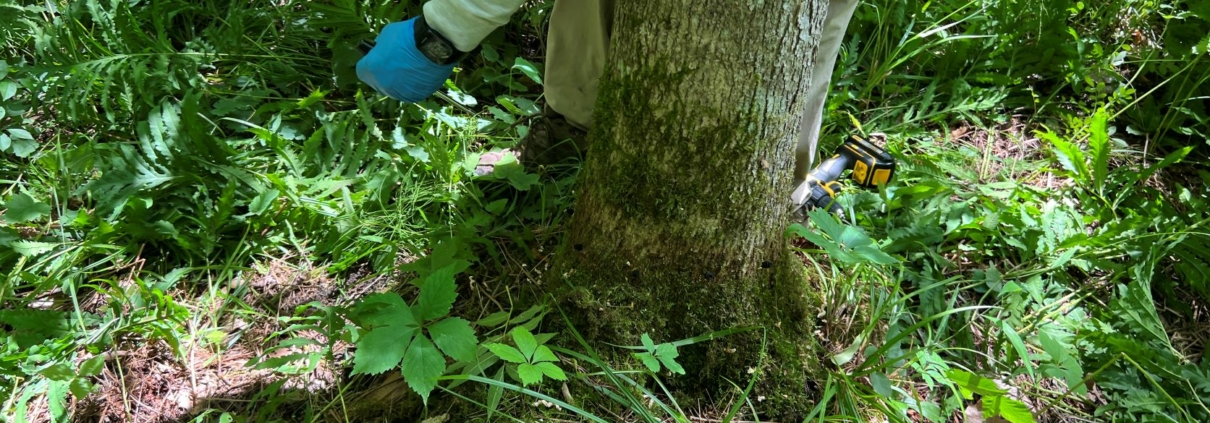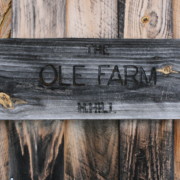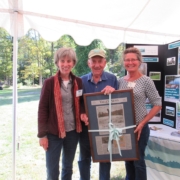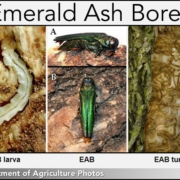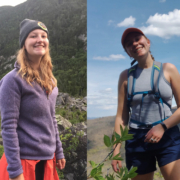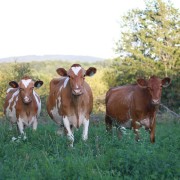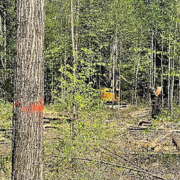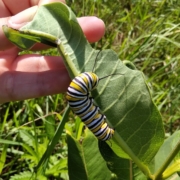Treating Emerald Ash Borer at Up on the Hill
Earlier this month twelve Emerald Black Ash trees at Up On the Hill Conservation Area were treated for Emerald Ash Borer (EAB) through a new program* managed by the NH Division of Forests and Lands. Using an emamectin benzoate insecticide, which is a trunk-injected systemic pesticide, each application should be effective for at least three to four years.
Unknown to North America until its discovery in Michigan in 2002, EAB larvae feed on the inner bark of ash trees, disrupting the tree’s ability to transport water and nutrients, ultimately killing the tree. EAB has claimed hundreds of millions of ash trees in the Midwest and mid-Atlantic states, and it is expected to destroy most of the ash trees in New Hampshire and Vermont if left untreated. To maximize the likelihood of preserving ash as a component of our forests, it is critical that we act now to protect mature seed-bearing trees.
It is hoped that pockets of protected ash can act as a seed source for years to come, populating the forests with young ash which, with assistance from natural enemies released through the biological control program, will reincorporate into the forests following the initial wave of emerald-ash-borer-induced mortality. We may also be able to collect and store seeds from treated trees for use in future projects. To learn more about Emerald Ash Borer and UVLT click here.
*The goal of the NH Division of Forest and Lands project is to identify and protect areas that are unique/exemplary examples of ash forest, or stands that otherwise provide ecological, historical, or social benefits which deem them worthy of inclusion in the project. Protecting these trees will serve to maintain ecosystem services provided by the trees as well as creating small-scale refugia of localized ash genetic diversity.
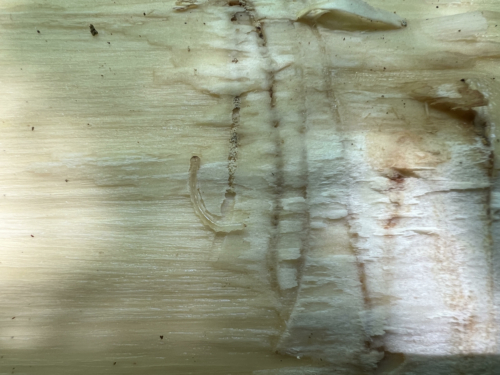
Emerald Ash Borer larva pictured in an ash stand at Up on the Hill

